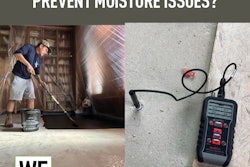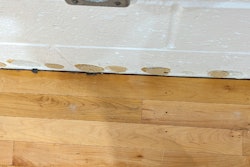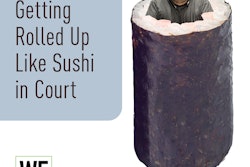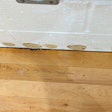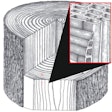

A word to flooring contractors feeling blindsided by the vigorous growth in demand for wood floors over radiant heat: Relax.
The basic rules haven't changed for years, and with one exception they probably won't anytime soon.
Also, products and techniques being developed to make radiant-floor heating systems easier to install and more energy-efficient are also making those systems much more conducive to hardwood floors.
Now that you're relaxed, get ready.
"You're going to see the trend throughout the nation," says Kevin Mullany of Benchmark Wood Floors in Cedar Crest, N.M., near Albuquerque. "We're doing a lot of it here. New construction is probably about 75 or 80 percent of our work. High-end housing is where the wood flooring is going, and the majority of those houses have in-floor radiant heat, probably also about 75 to 80 percent. So it's a huge percentage of our work. Over the past three years demand has been very consistent," Mullany says.
Industry associations concur.
"It's growing quite rapidly," say Mickey Moore of the National Oak Flooring Manufacturing Association in Memphis, Tenn. "I field a lot more calls here with regard to radiant heat systems. Over the last 12 months, probably one out of 10 calls I get concerns radiant heat."
"It's a very popular way of heating," says Daniel Boone of the National Wood Flooring Association in Ellisville, Mo. "Believe me, we get a lot of calls on radiant heat here at the office."
There's been a "dramatic increase in radiant floor heating," says Larry Drake of the Radiant Panel Association, which represents manufacturers, vendors and end users of radiant-heating systems and components. "Over the past 10 years we've seen 30 percent plus per year growth in the industry. It just keeps right on growing like crazy."
Why the increase in demand?
"If you live in Minnesota and you have a hardwood floor, generally speaking in the wintertime the floor is going to be cold," Drake says. "But you put in radiant heat and all of a sudden that floor becomes very friendly — not only beautiful but also very comfortable. So it's basically word of mouth," he says, that is generating the demand.
But there are reasons beyond comfort as well.
"The system is more energy efficient — that's why people are using it," says Ron Spiteri of Spiteri Brothers in Napa, Calif., who installs "at least one, if not two," wood floors over radiant heat a month. In the long run it's going to save you money. And there's a lot less dust blowing in the air," compared with forced-air heating systems, he says.
Because the heat in a radiant system is transferred object-to-object (floor to feet, for example), lower overall room temperatures can be maintained while achieving the same comfort level. Also, there's less heat loss by way of air infiltration from outside.
In addition, technological advances in the various components of the radiant system — tubing, monitors and controls, manifolds, and so on — have made it possible to reduce the maximum water temperature circulating in the tubes and maintain a more consistent level of heat.
The steadier, cooler temperatures do more than save energy, of course. They answer the prayers of the floor man, because high, fluctuating temperatures can exacerbate the movement in the wood floor. And, of course, excessive movement is what can lead to floor failure.
MOISTURE CONTROL IS THE KEY
What hasn't changed are the rules that call for meticulous, if not obsessive, attention to the relative moisture contents of the floor and adjacent materials — such as latex paint, mortar, stucco or anything else "wet."
Michael McSwain of McSwain's The Hardwood Floor Store installs floors in and around his home base of Cincinnati, where radiant heat is growing but not yet commonplace. Heating contractors there appear to be experimenting with different kinds of floor systems, so when he sees something new he checks with the National Wood Flooring Association and with members who live where radiant heat is more common.
The basic, long-standing rules call for making sure job site moisture has dissipated — the concrete slab fully cured or the framed subfloor fully acclimated — and the heat has been turned on and run for some time. After that the flooring can be delivered to acclimate for two weeks or more.
"The latest one we did — it was 1/2-inch quartersawn maple — actually acclimated at the job site for two months," says Spiteri.
Some building contractors may object to such delays, but Spiteri says, "They don't have a choice. This person's spending almost $100,000 on her floors, I'm going to guarantee it, and this is how I'm going to do it."
In order to "get the numbers right," as NWFA's Boone puts it, a moisture meter is an absolute necessity. The flooring manufacturer should be able to suggest what the numbers should be, based on the type of application and the local climate. (See "Getting the Numbers Right," page 48.)
All these precautions can intimidate the inexperienced, but according to Howard Brickman of Brickman Consulting in Norwell, Mass., "It's really pretty simple. I mean, it's really very simple: At a given relative humidity, the floor's EMC [equilibrium moisture content] is a certain percentage. If you increase the humidity, it's going to swell and if you decrease the humidity, it's going to shrink. It's a direct relationship, and if guys will understand that, they can do anything they want," he says.
Fortunately, "the knowledge level in the industry has increased over the years," Brickman says. "In the past, about half my consulting business was going out and looking at cupped floors and explaining to people that it was caused by excessive moisture on the underside. I get less and less of that. I think it's mainly because people are a little better educated."
FINDING THE RIGHT SYSTEM
If the rules regarding radiant floors, site conditions, and moisture contents are long-standing and widely accepted among those in the know, there is no such agreement on the subject of the different radiant-floor systems and their compatibility with the different types of wood flooring available.
"Right now," says RPA's Drake, "the knowledge we have about wood floors over radiant heat is mostly just experiential knowledge — what's been done in the field."
According to Drake, a bright spot on the horizon is an 18-month study being conducted by the American Society of Heating and Refrigeration Engineers at Kansas State University. "They have a research project that is studying the convectivity or the transfer of heat in all types of floor sandwiches," he says. "However, they just built the test laboratory, so the study is just at the beginning stages."
For now, definitive answers to questions about which flooring materials are the best match for which radiant floor systems will have to wait. Floor installers will have to play the hand they're dealt and go with what they know.
Around Albuquerque, 70 percent of the radiant floors consist of plastic tubes embedded in concrete-slab subfloors, says Mullany. His company occasionally directly glues down an engineered product, and more often installs a floating-floor system.
But mostly, he uses the traditional solid, 3/4-inch tongue-and-groove wood floor with two layers of 1/2-inch plywood subfloor over a vapor barrier on top of the slab.
"We have the builder recess the slab 1 1/4 inch," he says. "Our total floor thickness is going to be 1 3/4 inch, and so by him recessing it 1 1/4 inch, we match out flush with ceramic tile."
On framed-wood subfloors, Mullany can use the same technique, because the builder typically positions the tubes on top of the subfloor decking, then floats the entire floor with 1 1/2 inch of gypsum cement.
"I don't like the sleeper system at all," he says, referring to the more common practice of running the tubes between sleepers on top of the subfloor. The problem is, the sleeper placement "dictates where we're going to nail. The wood floor itself should dictate where we're going to nail."
Brickman doesn't like the sleepers ystem either. "Some of the radiant heating manufacturers recommend putting sleepers down 12 to 16 inches apart, then pouring some kind of cementitious material between them, whether it's gypsum cement or lightweight concrete, then nailing directly to the sleepers," he says. "I find that to be extremely risky for two reasons. One, there isn't enough frequency of nailing there. That's the major problem. Twelve inches is not enough, especially when you have a subfloor that's going to shrink a little bit more than a standard floor because of the heat source.
"The other thing is, a lot of times there's so much excessive moisture in that lightweight concrete that it saturates the subfloor, it saturates the sleepers, and they don't allow it to dry properly," Brickman says.
But in Napa, where wood-framed floors are typical, the sleeper system works for Ron Spiteri, who stresses the importance of becoming involved in determining the spacing and location of the sleepers.
"You need a nailing pattern. We'd rather nail than glue, and we like to nail every eight inches," he says. "The last house we did had borders everywhere, so we really had to lay it out with the warm floors guy and the contractor. It's crucial."
On the few occasions where Spiteri has been called on to lay a floor over a radiant slab, he's used a solid-wood floating floor system that goes together with metal clips.
Brickman, too, favors the use of this product over a slab: "The metal clips actually hold the pieces in relative position, so when these pieces start to shrink, the shrinkage occurs between every board," he says.
There is another approach to combining wood subfloors and radiant heat, RPA's Drake says, noting that an increase in installations where the tubing is applied to the underside of the subfloor, rather than embedded in material of any kind.
One reason is the cost factor, he says. "It's much easier to just go in and apply the tubing between the joists without interrupting any of the other construction. Also, by putting the tubing in the joist space, we see what we think to be a better spreading of the heat underneath the subfloor. And it allows the hardwood floor to be nailed directly to the subfloor."
Insulation is typically applied beneath the tubing, and aluminum "fins" or plates are sometimes used to help spread the heat.
When Mullany encounters such an installation, he asks the builder to "run some more tubing in there, to reduce the chance of hot spots causing movement inconsistencies in the finished floor. That's our only request," he says.
CHOOSING THE RIGHT WOOD FLOORING
Because of its dimensional stabilty, engineered wood flooring is often recommended for use over radiant heat. If solid wood flooring is to be installed over radiant heat, quartersawn lumber offers the best chance for a successful installation.
Compared to plainsawn flooring,"You'll see up to a 50 percent reduction in shrinking and swelling because of the structure of quartersawn wood," says Brickman.
"We always use quartersawn material, either 3/4 or 1/2 inch," says Spiteri. "It's a must — I can't express it strongly enough."
There is some dissension, however, on the issue of 3/4-inch solid products versus thinner ones — typically 1/2-, 3/8-, 5/16- inch thick.
"We'd rather use 1/2-inch material; it's more stable," says Spiteri.
"There's a line of thinking that those products are more stable, although I don't know that I've ever read anything that actually verified that," says Mullany. "It is proven that they do react more quickly, so that if you have a five-day cycle of abnormally low or high humidity it may not affect 3/4-inch at all, but it is going to affect a 5/16-inch product. It's not going to expand any more over the long haul — perhaps it'll expand less — but it's going to react faster."
Mullany also doesn't buy the argument that a buildup of material between the heat source and the top of the finish floor — such as those two layers of 1/2-inch plywood, plus the thickness of the slab over which they're laid, plus the thickness of the floor itself — substantially impacts the efficiency of the radiant system.
"All you're really doing by having it thicker and having some insulation between the two is you're slowing down the reaction time from slab to room," he says. "For radiant heat to be efficient, you want to just set your thermostat and leave it where it's set," he says, "so you only have one little blip."
"We want that water cycling year round," Mullany says. "We don't want that slab to completely cool, because when the heat comes back on you're going to have additional condensation."
Boone's understanding of the efficiency question is different: "The thicker you go with the subfloor or the hardwood flooring product, the more energy you use in the system."
At least one manufacturer of quartersawn solid wood flooring recommends gluing it down directly on radiant-heated slabs, and some might argue that gluing down 1/2-, 3/8- or 5/16- inch quartersawn flooring would be the most energy-efficient —reducing the total thickness of the flooring system. However, says Boone, "At this time the NWFA cannot recommend that you glue a solid product to concrete."
That could change, Boone suggests. "There are some 1/2-inch products and some 3/8- and 5/16- inch products that are successfully installed over concrete. It's the 3/4-inch product installers have had problems with," Boone says. "So I would say that within a year or so there will probably be some changes made" to the association's installation guidelines.
Will the guys in the field embrace these changes? Time will tell, but for now, "We don't like gluing wood floors down because it's harder on your feet for standing, it's harder to replace, and the floor can't move like it's supposed to," Spiteri says.
"It's not something we want to pursue," says Mullany. "We have techniques that work day in and day out, and when you have that and when you're building a reputation based on it, you stick with it."
CHANGES IN RADIANT HEAT SYSTEMS
Some product designers are looking for other ways to reduce the overall thickness of the floor sandwich, increase efficiency, and reduce response time. EPA's Drake says there are several such products now on the market that coincidentally "make putting down a hardwood floor a little easier" as well.
One is Warmboard — an interlocking 13/32-inch-thick wood composite panel system that is used as the actual subfloor. The 4-by-8-foot panels are grooved on top to accommodate the radiant tubing and feature an unbroken aluminum skin.
Since walls are framed after thesubfloor is installed, the 12-inch-on-center tubes can run without regard for room layout. Hardwood floors can be nailed directly into the Warmboard. The 1/2-inch tubes are clearly visible to the floor man.
Another panel product, called Quik Trak, also features grooves for the tubing and an aluminum component. The 7-by-48-by-1/2-inch-thick panels are designed to go over the top of existing wood subfloors or concrete slabs, so they can be used in retrofit applications as well as in new construction.
The system is designed to accommodate 5/16-inch tubing. Both the panels and the tubing are manufactured by Wirsbo.
STAYING ON TOP
With the continuing evolution of radiant-heat systems, wood flooring contractors will face a challenge in keeping up with recommendations for installing over those systems. One place to start, of course, is with the manufacturers of the systems —perhaps collecting a file of installation procedures and guidelines for each.
With any system, most agree, a lot of problems can be avoided if there's early communication and cooperation among all involved — the flooring contractor, builder, heating contractor, plumber and owner. With that, the end result is more likely to be in line with everyone's expectations.
Steve Baxter is a former building contractor and occasional contributor to Hardwood Floors.














